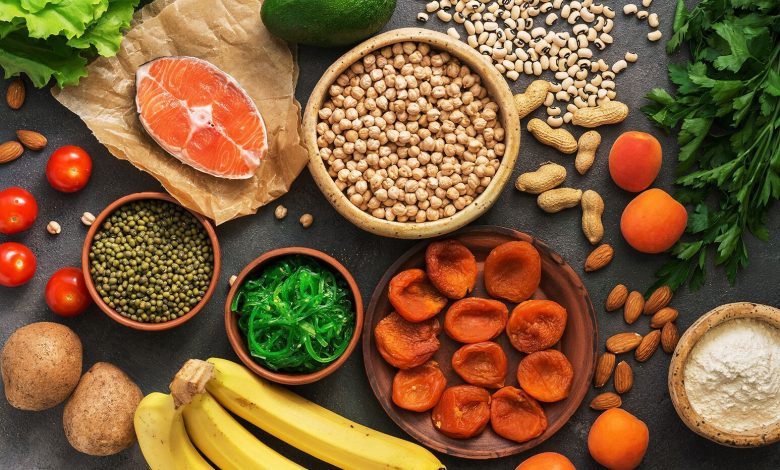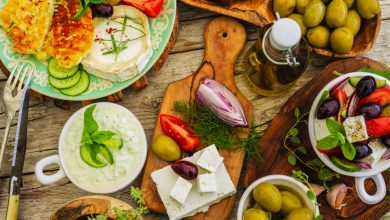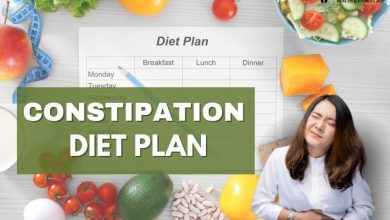Easy 7-Day Meal Plan for Low Potassium Diet to Support Kidney Function

Maintaining kidney health is essential for overall well-being, especially for individuals diagnosed with chronic kidney disease (CKD) or those at risk of kidney problems. One of the most critical dietary adjustments for supporting kidney function involves controlling potassium intake. While potassium is a vital nutrient that helps muscles and nerves function properly, too much of it can be harmful when your kidneys can’t filter it effectively.
If your doctor or dietitian has recommended a low potassium diet, planning meals might feel overwhelming at first. But don’t worry — this easy 7-day meal plan for a low potassium diet is designed to keep your meals delicious, balanced, and kidney-friendly.
Understanding the Importance of a Low Potassium Diet
What Is Potassium and Why Is It Important?
Potassium is an essential mineral that helps regulate fluid balance, nerve signals, and muscle contractions. It also plays a role in maintaining normal heart rhythm and blood pressure. Healthy kidneys help keep potassium levels within a safe range by excreting excess potassium through urine.
However, when kidney function declines, potassium can accumulate in the bloodstream, leading to hyperkalemia — a condition that can cause dangerous heart rhythms or even cardiac arrest.
Why Choose a Low Potassium Diet?
People with kidney disease or those taking certain medications that affect potassium levels often need to limit their potassium intake. A low potassium diet helps:
- Prevent hyperkalemia (high potassium levels)
- Reduce strain on the kidneys
- Support better heart and nerve function
- Maintain electrolyte balance
Typical Potassium Targets
For most people with kidney disease, daily potassium intake is restricted to about 2,000 to 3,000 mg per day, depending on individual needs. Always follow your doctor’s or renal dietitian’s specific recommendations.
Foods to Limit or Avoid on a Low Potassium Diet
When planning meals, knowing which foods are high in potassium is key. Here are some examples:
High-Potassium Foods to Avoid
- Bananas, oranges, cantaloupe, and dried fruits (raisins, apricots)
- Potatoes, tomatoes, sweet potatoes, and spinach
- Avocados, beans, and lentils
- Milk, yogurt, and certain dairy products
- Chocolate, nuts, and seeds
- Salt substitutes (many contain potassium chloride)
Lower-Potassium Alternatives
- Apples, berries, grapes, peaches, and pineapples
- Green beans, carrots, cabbage, cauliflower, and cucumbers
- White rice, pasta, and bread
- Rice milk (unenriched), non-dairy creamers
- Lean meats, eggs, and fish in moderation
Tips for Managing Potassium in Your Meals
- Double-boil vegetables: Cut and soak vegetables in water for 2 hours, then boil them in fresh water to reduce potassium levels.
- Watch portion sizes: Even low-potassium foods can add up if you eat too much.
- Avoid processed or canned foods with potassium additives (check labels for “potassium chloride,” “potassium phosphate,” or “potassium lactate”).
- Stay hydrated as directed by your healthcare provider.
- Balance your plate — include protein, carbs, and healthy fats while keeping potassium and sodium low.
7-Day Low Potassium Meal Plan
Below is a simple, practical 7-day meal plan designed for kidney support. Each day includes breakfast, lunch, dinner, and snacks — all low in potassium yet tasty and satisfying.
(Note: Always check with your healthcare provider before starting any new diet plan.)
Day 1
Breakfast:
- Scrambled egg whites with a slice of white toast
- A small apple
- Herbal tea or black coffee
Lunch:
- Chicken salad with lettuce, cucumber, and apple slices (use olive oil dressing)
- White rice (½ cup)
- Unsweetened iced tea
Dinner:
- Baked cod with lemon and herbs
- Steamed carrots and green beans
- Rice pudding (made with rice milk)
Snack:
- Rice cakes with unsalted butter
Day 2
Breakfast:
- Oatmeal made with rice milk
- Blueberries (¼ cup)
- Herbal tea
Lunch:
- Turkey sandwich on white bread with lettuce and cucumber
- Unsalted crackers
- Apple juice (½ cup)
Dinner:
- Grilled chicken breast
- Boiled cauliflower and white rice
- A small peach
Snack:
- Unsalted popcorn (air-popped)
Day 3
Breakfast:
- Pancakes with a drizzle of maple syrup
- Strawberries (¼ cup)
- Decaffeinated coffee
Lunch:
- Tuna salad sandwich on white bread
- Mixed green salad (no tomato, no avocado)
- Lemon water
Dinner:
- Ground beef stir-fry with low-potassium vegetables (cabbage, carrots, bell peppers)
- White rice or noodles
Snack:
- Applesauce (½ cup)
Day 4
Breakfast:
- Cream of wheat cereal
- A few grapes
- Chamomile tea
Lunch:
- Egg salad sandwich (use egg whites and light mayo)
- Sliced cucumber and apple salad
- Sparkling water
Dinner:
- Oven-baked tilapia
- Steamed cabbage and white rice
- Rice milk pudding
Snack:
- Graham crackers
Day 5
Breakfast:
- French toast made with egg whites and white bread
- Raspberries (¼ cup)
- Black coffee
Lunch:
- Chicken noodle soup (low sodium, homemade with double-boiled carrots)
- White roll or bread slice
- Pear (small)
Dinner:
- Grilled turkey patty
- Cooked cauliflower and rice pilaf
- Non-dairy vanilla pudding
Snack:
- Rice crackers with hummus (small portion)
Day 6
Breakfast:
- White toast with unsalted butter and honey
- A handful of blueberries
- Green tea
Lunch:
- Baked chicken sandwich on white bread
- Lettuce and cucumber salad
- Lemonade (½ cup)
Dinner:
- Baked salmon with herbs
- Boiled green beans and carrots
- White rice
Snack:
- Apple slices with low-sugar yogurt dip (non-dairy)
Day 7
Breakfast:
- Low-sugar cornflakes with rice milk
- A few peach slices
- Herbal tea
Lunch:
- Roast beef sandwich (white bread, no cheese)
- Coleslaw (made with cabbage and vinegar dressing)
- Water or herbal tea
Dinner:
- Oven-baked chicken thighs (skinless)
- Steamed carrots and cauliflower
- Rice pilaf
Snack:
- Graham crackers or unsalted rice cakes
Low Potassium Snack Ideas
Keeping snacks ready helps you avoid reaching for high-potassium foods. Here are some kidney-friendly snack ideas:
- Unsalted popcorn
- Rice cakes or crackers
- Graham crackers
- Applesauce
- Fresh berries (small portions)
- Small fruit salad (apple, grapes, pineapple)
- Homemade muffins made with white flour
Tips for Eating Out on a Low Potassium Diet
Maintaining a low potassium diet doesn’t mean you can’t enjoy dining out. Here are a few smart tips:
- Ask for ingredient details — request no tomatoes, potatoes, or avocado.
- Choose grilled, baked, or steamed dishes over fried options.
- Opt for white rice, bread, or pasta as your carb source.
- Avoid sauces like tomato-based or soy-based dressings.
- Request your meal without salt substitutes — some contain potassium.
- Stick to water, lemonade, or herbal tea instead of fruit juices or soda.
Sample Grocery List for a Low Potassium Diet
Fruits (low potassium):
- Apples
- Berries (strawberries, blueberries)
- Grapes
- Pineapple
- Peaches
Vegetables (low potassium):
- Cabbage
- Cauliflower
- Carrots
- Cucumber
- Lettuce
- Green beans
Grains and starches:
- White rice
- Pasta
- White bread
- Rice cakes
- Unsalted crackers
Protein sources:
- Chicken breast
- White fish (cod, tilapia)
- Turkey
- Egg whites
Dairy alternatives:
- Rice milk (unenriched)
- Non-dairy creamers
Others:
- Olive oil
- Unsalted butter
- Herbs for flavor (parsley, oregano, rosemary)
Common Mistakes to Avoid
- Using salt substitutes: Many salt substitutes are rich in potassium chloride, which can dangerously raise potassium levels.
- Overeating low-potassium foods: Even low-potassium foods can cause issues if eaten in large quantities.
- Drinking too much fruit juice: Most juices are concentrated sources of potassium — limit to ½ cup per serving.
- Ignoring food labels: Always read labels for potassium additives or “potassium phosphate.”
- Not consulting a dietitian: Each person’s potassium needs vary — personalized advice is crucial.
Hydration and Kidney Health
Water is essential for healthy kidneys, but the right amount varies depending on your condition. Too much water can strain your kidneys if you have fluid retention issues, while too little can lead to dehydration. Always follow your doctor’s hydration guidelines.
Try herbal teas, infused water (with cucumber or mint), or small servings of lemonade to stay refreshed without overloading on potassium.
Lifestyle Tips to Support Kidney Function
A low potassium diet is only one part of maintaining kidney health. Here are additional lifestyle tips to enhance kidney function:
- Maintain a healthy blood pressure: High blood pressure can damage kidney vessels.
- Control blood sugar levels: Diabetes is a major cause of kidney disease.
- Limit sodium and processed foods: Excess sodium can lead to fluid retention and worsen kidney problems.
- Stay physically active: Light exercise promotes circulation and overall health.
- Avoid over-the-counter painkillers (NSAIDs) that may harm kidneys.
- Quit smoking and limit alcohol for better overall organ function.
Conclusion
Following a low potassium diet doesn’t have to be complicated or flavorless. With a bit of planning and creativity, you can enjoy nutritious, satisfying meals while keeping your potassium levels in check and supporting your kidneys.
This easy 7-day meal plan for a low potassium diet offers balanced, kidney-friendly options that make daily eating stress-free. Whether you’re newly diagnosed with kidney concerns or simply aiming to protect your kidney health, this plan provides a simple foundation for better nutrition and long-term wellness.
Remember: always work closely with your healthcare provider or a registered renal dietitian to tailor your potassium intake to your specific needs. With mindful eating and consistent care, you can keep your kidneys functioning at their best for years to come.




